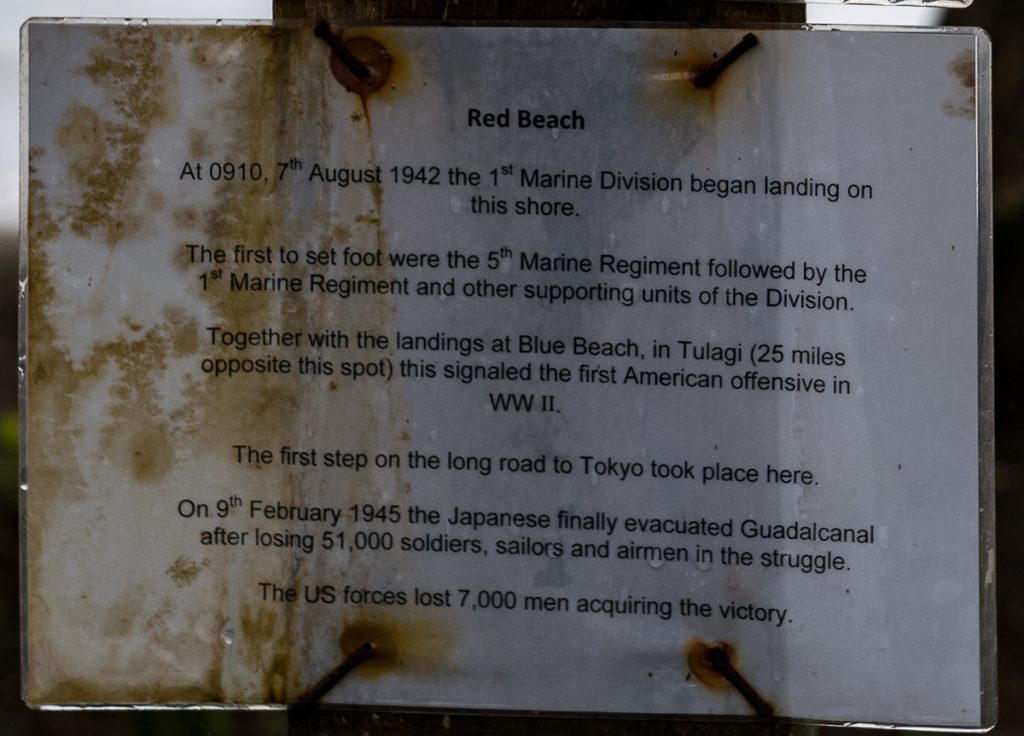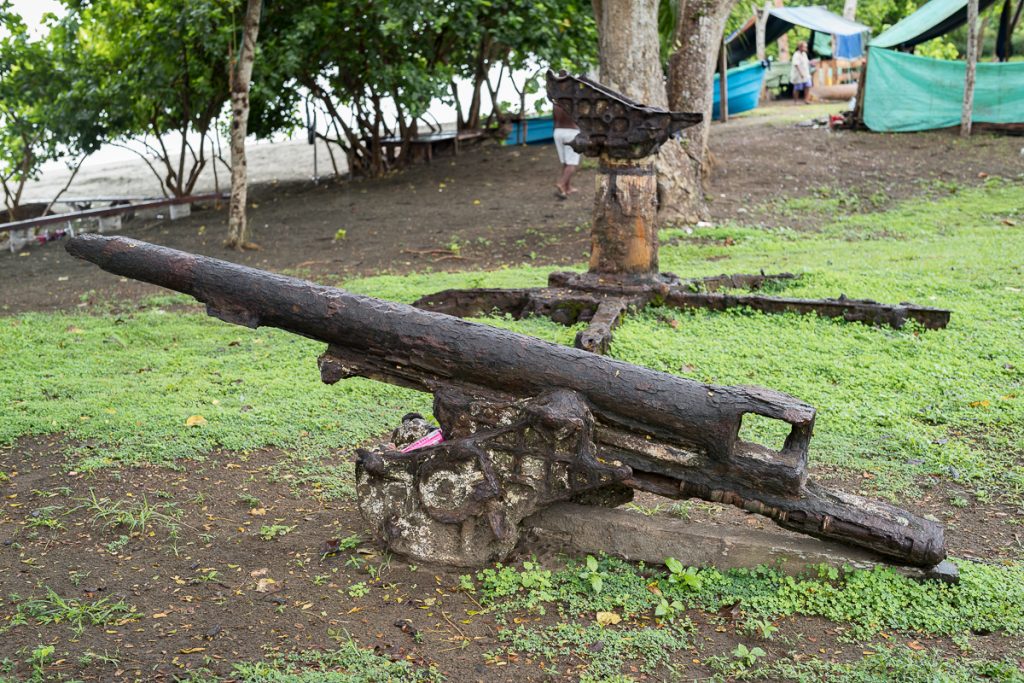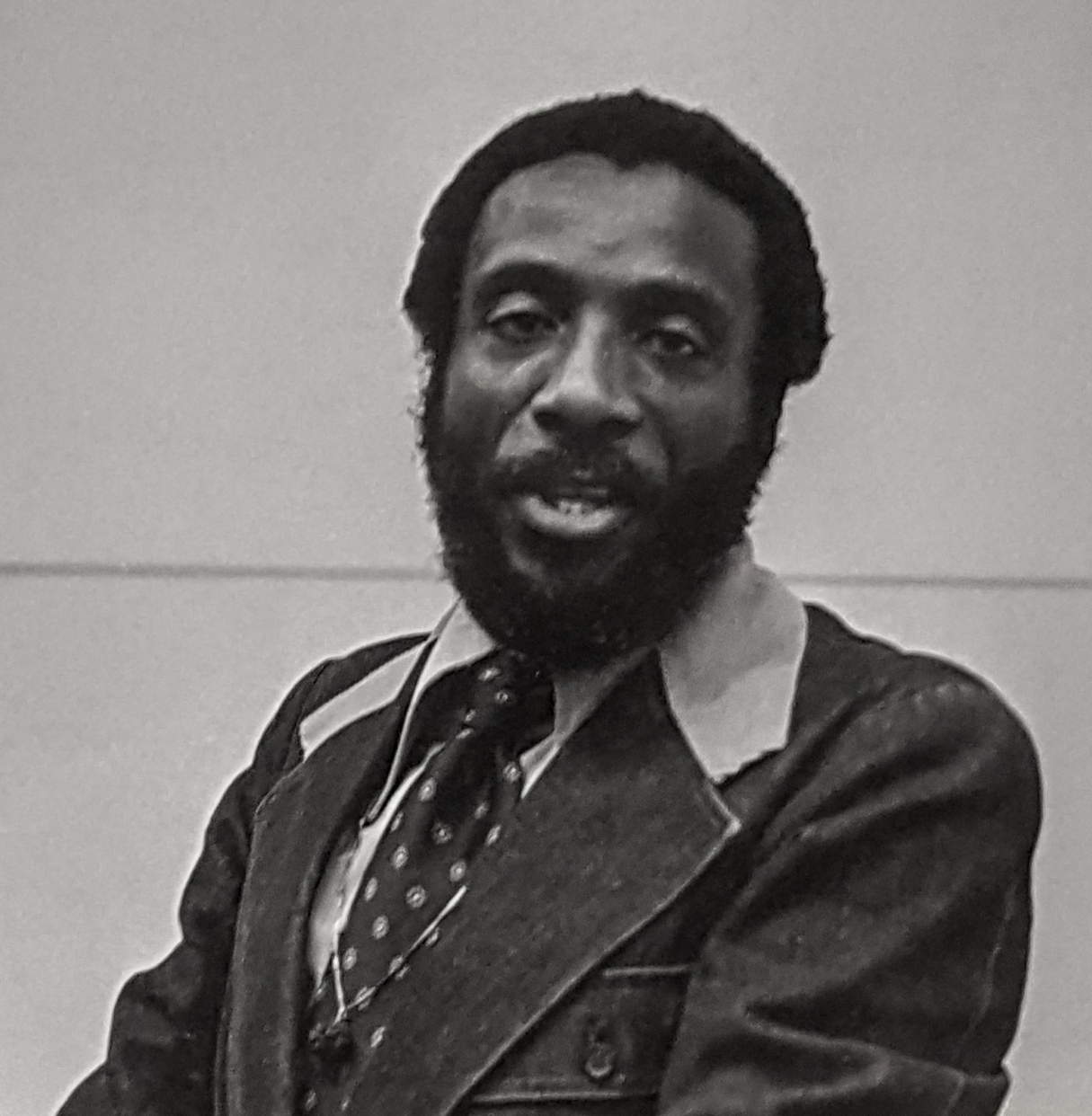
Terry Holding His Son Jacob
Red Beach, WWII U.S. Marines Landing Area
Guadalcanal Island, Solomon Islands
With his wife and nine children he lives ‘rough’ on Red Beach, the site of the first landfall of the U.S. Marines in the Solomon Islands. The family has only recently returned to this shore-front they say they own. He and his wife are Gilbert Islanders, Micronesians, in this country of Melanesians. Despite their uncertain future, the family and little community maintain the site. The original historic marker has been stolen and moved 500 meters west to draw tourists and our dollars there. (The two Solomon Island brothers who they say drove them away to keep the land for themselves have recently been jailed which has allowed the return of Terry and his family.)
The Gilbert Islands are a group of 32 atolls and reef islands and one raised coral island dispersed over 1.3 million square miles, halfway between Hawaii and Papua New Guinea. It is the nation now known as Kiribati (their pronunciation of the word ‘Gilbert’ — though accented, Terry’s English is a good as mine). The name was coined in 1820 by a German admiral, in the employ of Russian Tsar Aleksandr I, after the British captain who ‘discovered’ the islands in 1788. This mix of European interests in the Pacific is a common circumstance involving changing identities and loyalties for the last couple centuries.
The main north-south line of islands in Kiribati is still called The Gilberts and stretches 780 km/485 miles. It is amazing to me that with a small population and such close proximity (in sea-faring Pacific islander terms) the northern islands were ruled by a chief and the southern islands were run by collectives of elder men. The origin myth of the Gilbertese has the ancestors coming from the West and being whitish-skinned and red-haired. It is intriguing to speculate that the Asian branch of the Neanderthals, the Denisovans, might have been sea-faring!

Most Westerners know almost nothing about Kiribati so here are three points of general interest that stand out to me:
– three of the islands were Great Britain’s last attempt at colonization (1938-1963)
– the islands were attacked by the Japanese in December 1941 on the same day as Pearl Harbor. In August of 1942 U.S. Marines landed an attack and 19 were captured as prisoners and summarily executed by the Japanese. In 1999 their bodies were finally returned home by an honor guard.
– three of the islands are U.S. territories, including Palmyra Atoll, the only incorporated U.S. Territory.
(There are a total of 14 Insular Areas around the world that fall under U.S. jurisdiction. Can you name them!)
Japanese Type 88 75mm Anti-Aircraft Gun
(with its base just beyond)



